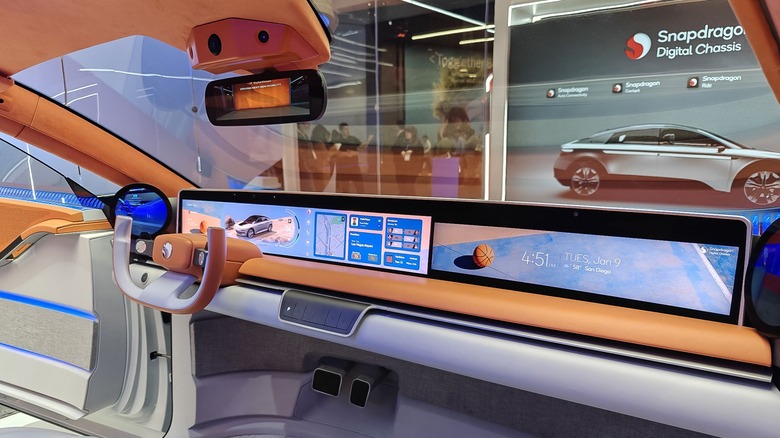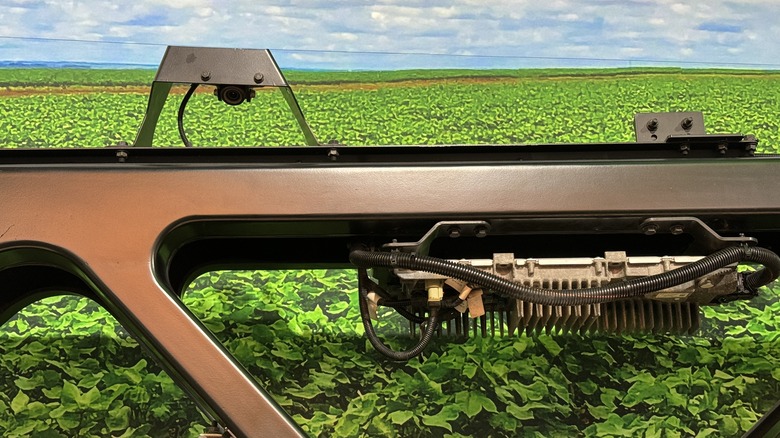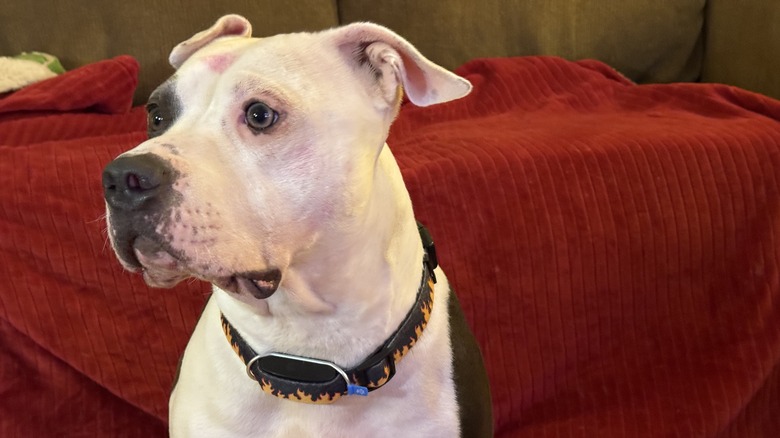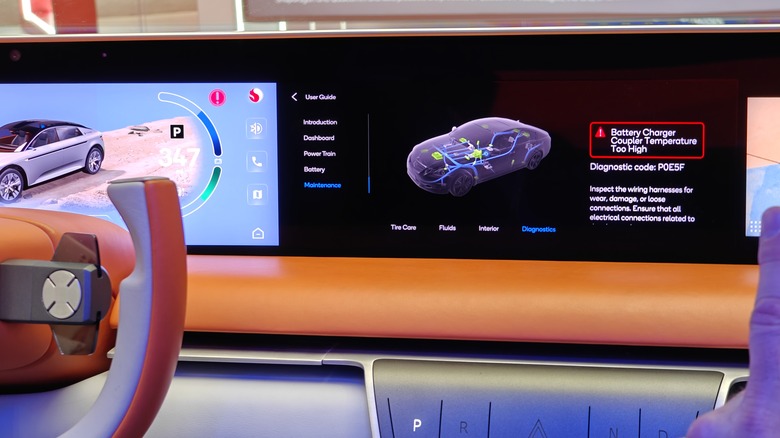Innovative And Outlandish: These Are The Best And Worst Uses Of AI We Saw At CES 2024
We may receive a commission on purchases made from links.
It would be something of an understatement to say that AI was a focus at CES. It seemed like every company that planned to attend CES had duct-taped some kind of AI implementation to their products—whether it belonged there or not. That's not to say that every AI product at CES was bogus—far from it. But needless to say, some implementations were good, and some were very not.
Some of the AI-infused projects shown at CES included a bicycle with ChatGPT, a smart weed killer, instant automotive diagnostics on a vehicle's dashboard, and a cat flap that's effectively a bouncer for mice and birds.
You might find this whole list to be absurd, or you might find a few you like and can't wait to get your hands on. Either way, take a peek at some of the standout AI products we happened upon at CES 2024.
Innovative: See and Spray by John Deere
When you think "AI" you probably think of ChatGPT or some other large language model (LLM), but there were other versions of AI on display at CES 2024. One of them was a machine learning model that John Deere designed to eliminate weeds in a farm field. See and Spray, as it's called, involves a huge array of cameras and GPUs mounted to a weed sprayer that can tool along the field at up to 15 miles per hour.
The cameras have been trained with machine learning to pick out the crops the farmer wants to keep — soy, corn, or whatever is in the field. They trained the AI with thousands of photos of those crops, so it could identify them by sight. As the machine drives across the field, the cameras spot anything that doesn't look like that crop and spray it as it drives by. It's a targeted spray that is better for conservation and better for the crops. It's what the military would call a surgical strike, as opposed to carpet bombing.
See and Spray has been around since 2021, so it's not new, but it's still one of the more impressive AI offerings we saw at the show. Farming technology is pretty massive and John Deere is leading much of the charge in that area. It wouldn't be surprising to see more AI coming from the company in the not-too-distant future.
Innovative: Duet in Google Workspace
Going back to the more traditional types of LLMs and Generative AI models, we had a chance to try out Google Duet. This is basically like Google Bard, but for enterprise applications, part of Google Workspace. During a private Google Booth tour for the media, the company had Chromebooks set up in Google Sheets and asked the media to put in prompts.
Before long, Google Duet generated a full itinerary for a romantic weekend for two in Galena, IL. The AI broke down the stops by the hour and included stops at a few local restaurants and wineries and even built-in time for shopping along the main street in town. It included the address, projected pricing for each activity, and even some notes about what you'd do there as well.
Of course, it's important to note that the very first item on the agenda — "Arrive in Galena at the Galena Amtrak Station" is a hallucination because the Galena train station isn't serviced by Amtrak (or anyone else). So beware if you decide you use any kind of LLM to plan your vacation, and be sure to fact-check the agenda before packing your bags.
Innovative: Minitailz by Invoxia
SlashGear already published a full review of Minitailz by Invoxia but the company was on display at CES 2024 and Minitailz has a generative AI component. This is a pet tracker that keeps health data for your pet and generates a daily report so you can see how your pet is doing. That's where the generative AI comes in.
Instead of just simply saying, "Your dog's heart averaged 65 BPM and he had an average respiratory rate of 14 breaths per minute," the company uses GenAI to create the report. The result is a report that is much more readable and digestible. "Today was a good day for Luca. He was very active and playful, etc."
This isn't the most bombastic use of generative AI, but it's an embellishment of a report that was already going to be created. The company just decided to use GenAI to make the report much more user-friendly.
Innovative: Automotive diagnostics with Qualcomm
In addition to phone and computing processors, Qualcomm is heavily invested in the automotive industry. One way that Qualcomm plans to support drivers in the near future is to install a custom-built LLM into your car that is trained on the car's user manual and technical specifications. That way, when your car is suffering from a technical error, you will be able to ask the car directly what is wrong and how to go about fixing it.
In this case, the LLM is just a part of the whole service. Qualcomm explained that in addition to the LLM, it will have connectivity and cloud integration so that the car can actually locate a service station and in some cases even schedule service, so you don't have to. This is another area where a very specific type of AI is in play with a fairly limited use case, but it's a smart integration designed to make lives a lot easier.
Outlandish: Flappie, the AI-powered cat flap
"AI" has seemingly wormed its way into every household object over the past year or so, including things that tend to be purely mechanical, like the humble cat flap (AKA a doggy door). While a small hole in the door covered by a hinged panel is standard, a Swiss company has decided that an AI doorman is necessary, lest your outdoor cat run amok throughout your house.
To be fair to "Flappie," there is some logic behind the "AI" integration. The cat flap is designed to recognize the times when cats are carrying a "little present" and deny them entry until the lump of potentially deceased animal has been discarded. So if you're sick of seeing birds with their heads gnawed off on the rug, or worse yet still live rodents let loose in your home, then there may be some value to it.
On the flip side, it also relies on your cat working out that it's being denied entry because of the fresh kill it's carrying in its mouth, and even if the fuzzball does work it out you'll still have a corpse on your doorstep when all is said and done. "Prey detection accuracy" is also around 90%, so you will still step on the mutilated remains of a baby squirrel every now and then. Alternatively, a bell on the collar doesn't need AI and is a tried and true method of reducing the number of murders your furry pal will commit when out and about.
Outlandish: Handywrytten AI-powered handwriting
Letter writing is a lost art. Most people prefer to type things these days, and the ability to write in cursive is dying out among younger generations. However, one company is attempting to use AI-powered robots to revive the practice of sending handwritten cards and letters.
Handywrytten touts itself as a possible solution. It will learn your specific writing style and hammer out a custom greeting card or letter that looks like it came from your hand. But let's be honest, it's all rather silly. The only reason a handwritten note is "more personal" comes from the fact you took the time to write it out yourself. This is still just a note you've typed but with some added steps and expense. The actual handwriting doesn't come from you, but instead comes from a soulless machine — and no one likes those. There's also a bit of bonus ridiculousness. The reason typing became the dominant format isn't down to hand cramps but is more likely linked to the fact the majority of people have awful handwriting.
You can get around this by selecting a pre-set style, instead of using your own handwriting as an example. However, dodging your own chicken scratch-like cursive makes it even less personal, even if you do opt for one of the messier pre-set styles. If you want to send someone a handwritten note, dodge the AI and pick up a dumb, ink-filled pen.
Outlandish: Urtopia AI ebike (with ChatGPT)
Many companies have crowbarred OpenAI's Chat GPT into their products in an attempt to give them an "AI" edge without spending billions developing their own model. One of those companies is Urtopia, which claims to have produced the world's first AI-powered e-Bike. A major selling point of the AI integration is its ability to streamline navigation, take you on the scenic route, measure fitness parameters, blast music through a set of inbuilt speakers, and thwart potential thieves with a "fingerprint lock."
So what's the problem? Well, you can take the cellphone out of your pocket, mount it to any old bike via a cheap mount from Amazon, and then have Google, Siri, or even Alexa do pretty much the same thing. It is worth pointing out that we're taking a dig at the AI functionality here, and not the bikes themselves, which may fare decently when compared to similar products. But the fact that an Apple/Android Mobile App is touted in the list of features alongside the ability to pop a sim card in the bike and link it with numerous bits of wearable tech makes the AI side seem like a lot of extra expense and effort for very little return.




